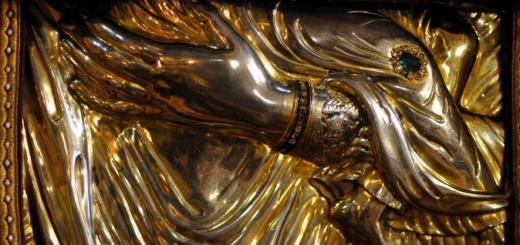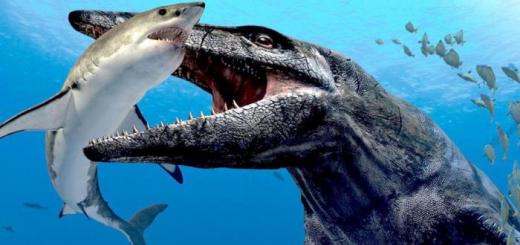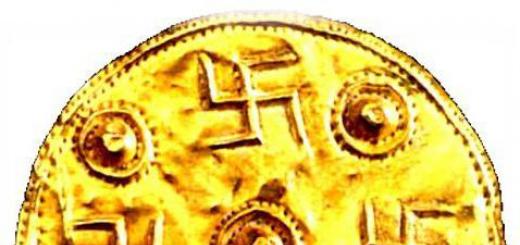"Terrible lizards" or dinosaurs lived on our Earth a long time ago, and then suddenly died out. These giant animals belonged to the class of reptiles and over their long period of existence, approximately 150 million years, gave rise to a huge number of species and subspecies. However, until now, much of the life of dinosaurs remains a mystery over which scientists are racking their brains. Many common misconceptions about dinosaurs have also formed. Let's consider some of them.

1. Myth: Man lived with dinosaurs.
Often in films, books and cartoons, we find statements that man and dinosaurs coexisted together. However, the last dinosaurs - abruptly died out about 65 million years ago, while the remains of our early ancestors - great apes, begin to be found only about 6 million years ago.

2. Myth: Mammals only evolved after the dinosaurs died out.
Small rat-like mammals lived at the same time as dinosaurs, that is, 150 million years ago, occupying the ecological niches of small, nocturnal animals weighing only 5 g. Mammalian ancestors, called synapsids, actually lived with dinosaurs.
However, about 65 million years ago, when dinosaurs began to die out en masse, the eco-niche of large animals was vacated. And then small nocturnal mammals began to evolve and fill the niche of large animals, becoming the main species on the planet.

3. Myth: Dinosaurs died out because mammals ate their eggs.
It is known that dinosaurs coexisted with mammals for a long time, more than 150 million years. Although dinosaur nesting sites were undoubtedly quite vulnerable and the dinosaurs themselves ravaged each other's nests, nevertheless, it was by no means mammals who did this. At that time, mammals were still too small and weak to break the shells of dinosaur eggs and eat them.

4. Myth: A meteorite impact led to the extinction of the dinosaurs.
It is established that approximately 65 million years ago, an asteroid with a diameter of 10 kilometers, called Chicxulub, crashed into Earth on the coast of the Gulf of Mexico in Yucatan, forming a giant 180 impact crater. Its fall is thought to have triggered a tsunami wave 50-100 meters high and a high temperature fire shock wave that circled the Earth several times. Clouds of ash, soot and dust raised into the sky led to climate change, as during a nuclear winter, which led to the extinction of dinosaurs. However, there is no convincing evidence that it was the fall of the meteorite that led to the extinction of the dinosaurs. After all, direct descendants of dinosaurs survived - birds, crocodiles, lizards and other reptiles.

Another theory suggests that before the meteorite impact, dinosaur numbers were already declining due to falling sea levels and massive volcanic eruptions. The combination of these impacts, as well as the results of the asteroid impact (giant tsunamis, acid rain, dust clouds) probably wiped out the dinosaurs.

5. Myth: Dinosaurs became extinct because they could not withstand evolutionary competition with other species.
Dinosaurs lived for more than 150 million years, so the version that their evolutionary version was unsuccessful does not hold water. Hominiforms live on Earth so far only 6 million years, and the history of Homo sapiens has no more than 200,000 years. Dinosaurs crowded out other animals for 150 million years during this long period, but were unable to recover from the deadly effects of a giant meteorite impact and climate change.

6. Myth: All dinosaurs died out 65 million years ago.
Birds appeared about 150 million years ago. Most scientists believe that they evolved from small carnivorous dinosaurs. These bird-like dinosaurs probably also suffered after the meteorite impact, but soon adapted to the new climate and spread to the entire planet.

7. Myth: Dinosaurs were slow and lethargic animals.
At first, paleontologists believed that dinosaurs were slow and sluggish animals, so they lost in the "evolutionary race" to faster and smarter birds and mammals. However, modern research has established that dinosaurs were just as mobile and nimble as modern mammals. Some carnivorous dinosaurs, such as Tyrannosaurus Rex and others, were active fast carnivores and, like modern lions, lay down and rested after a successful hunt.
Also, a 2000 study of well-preserved dinosaur remains found in a South Dakota riverbed found that dinosaurs had four-chambered hearts, more powerful than modern mammals and birds.

8. Myth: All large land reptiles since prehistoric times have been dinosaurs.
The first dinosaurs appeared 230 million years ago. At this time, land reptiles also lived, which reached a length of 5 meters. However, not all of them were dinosaurs. For example, Dimetrodon, or as it is also called, a sail that lived in North America in the Permian period (280-265 million years ago) was evolutionarily closer to mammals

9. Myth: Marine reptiles (like plesiosaurs and ichthyosaurs were dinosaurs).
Today it is established that all real dinosaurs were land animals. Marine reptiles evolved in parallel with the dinosaurs.

10. Myth: Flying reptiles were dinosaurs.
Flying reptiles such as the pterosaur appeared after the dinosaurs and then died out at about the same time as them. The largest of the flying reptiles could reach the size of an airplane and they were mainly predators. However, while flying reptiles were closely related to dinosaurs, they were still not true dinosaurs.
Keeping a reptile house is a relatively recent craze. If you are a lover of the exotic and want to get these very special creatures, then you can find various options for selling reptiles on the site.










